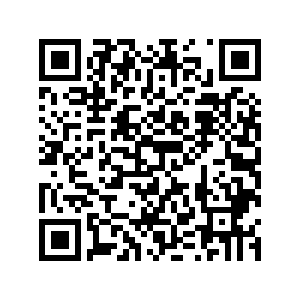ADDIS ABABA, May 5 (Xinhua) -- Thomas Debebe saw a career boost after a one-year scholarship program at Wuqiao Acrobatic Art School, in north China's Hebei Province.
Debebe was a member of a circus group in Debre Birhan, 130 kilometers north of Addis Ababa, the capital of Ethiopia, in 2019, when he went to Wuqiao, a far cry from Shewa Robit, his native town in central Ethiopia.
"There, I learned lots of circus arts, performing skills involving storytelling and improvisation," Debebe, a Cyr wheel performer, told Xinhua in a recent interview.
"I, along with my colleagues who were trained in China, are now able to exhibit different circus arts of international standard," he said.
"We managed to create synchronization between Chinese and Ethiopian cultures, and performed them in different shows in Ethiopia and beyond," Debebe said. "In China, I learned different techniques in Cyr wheel art."
He noted that the Chinese circus has various disciplines that require tough training.
Now, Debebe works for the Ethiopian Gymnastics Federation, which, along with a Chinese-trained martial art group, pulled off a stunning show on April 20, during celebrations marking the United Nations Chinese Language Day in Addis Ababa.
Apple Girma, who specializes in contortion and aerial art and performed at the April show, also received training at Wuqiao Acrobatic Art School.
"Contortion and aerial art are not known in Ethiopia. Only a handful of schools worldwide offer these types of training," she said. "I was lucky to get the chance and receive the training in China."
Girma, 19, has been practicing gymnastics and later circus arts since she was five.
"My performing skills have improved after I got the training in China. It helped me become popular and most wanted," she said.
"The interesting aspect of the circus lies in the performance itself. I have developed a complex act after receiving the training in China where there were excellent coaches," Girma said.
Wuqiao Acrobatic Art School provides scholarships for aspiring and practicing circus artists from places that are historically under-resourced and under-represented.
The relationship between the Chinese acrobatic school and the Ethiopian Gymnastics Federation began a decade ago when the first scholarships were offered to six young acrobats from different regions of Ethiopia.
"The scholarship opportunity had been open for international students until the outbreak of COVID-19 in 2020," Girmay Assefa, secretary general of the Ethiopian Gymnastics Federation, said.
So far, more than 50 Ethiopian students have been trained in China, he said.
"The training in China helped almost all students specialize in a specific circus art, become popular and be able to earn a good sum of money," Assefa told Xinhua, noting that some members of the first batch of trainees have already established their own circus groups that have been participating in different circus festivals across the world.
He said that acts such as freestanding ladder act, Chinese Pole and Cyr wheel were adapted from China and are now performed in different regions of Ethiopia.
According to the Ethiopian Gymnastics Federation, as in most other sub-Saharan African countries, the circus art had no historical precedents in Ethiopia until it was introduced as a foreign art in late 1980s. With storytelling at the center, circus arts in Ethiopia have evolved from traditional gymnastics and acrobatics. ■
